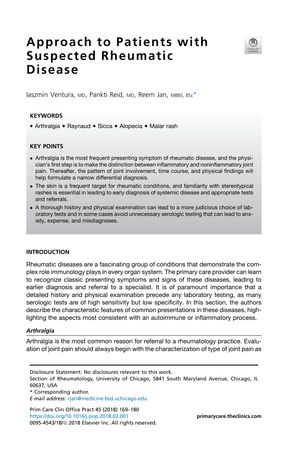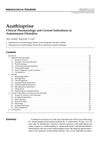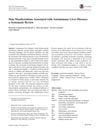Approach to Patients with Suspected Rheumatic Disease
May 2018
in “
Primary Care: Clinics in Office Practice
”

TLDR Doctors should use a detailed patient history and physical exam to diagnose joint pain, and consult a rheumatologist early for suspected autoimmune diseases.
In the June 2018 document, the authors outlined the diagnostic approach for rheumatic diseases, stressing the differentiation between inflammatory and noninflammatory joint pain and the importance of a comprehensive history and physical examination. They noted that arthralgia is a common reason for rheumatology referrals and that symptoms like morning stiffness and improvement with activity suggest inflammatory joint pain. The document also discussed the evaluation of various symptoms and their potential links to systemic diseases, such as alopecia areata's association with autoimmune disorders and the significance of skin manifestations in conditions like lupus erythematosus and dermatomyositis. The authors advised that laboratory tests should support, not lead, the diagnosis and recommended early rheumatologist consultation when autoimmune diseases are suspected.






